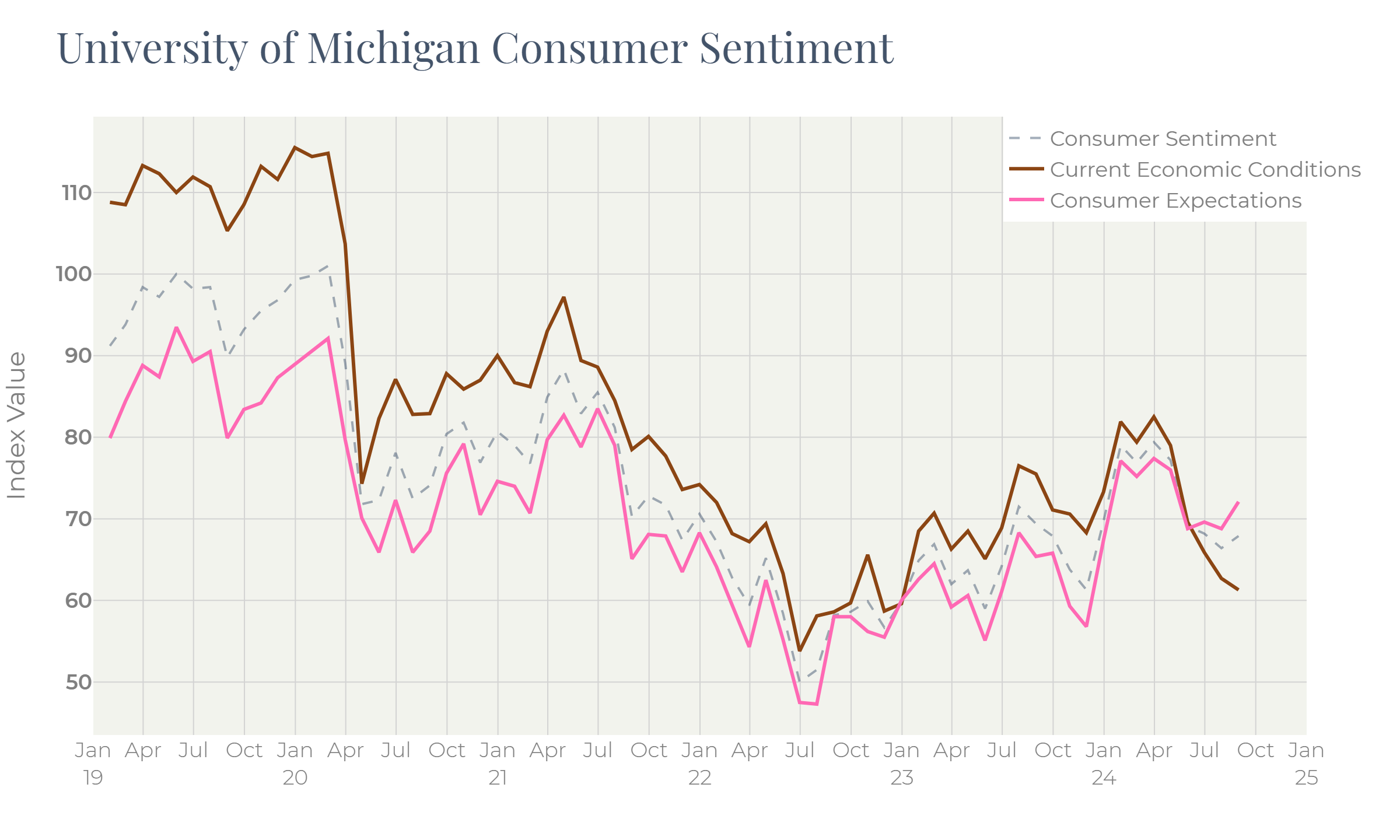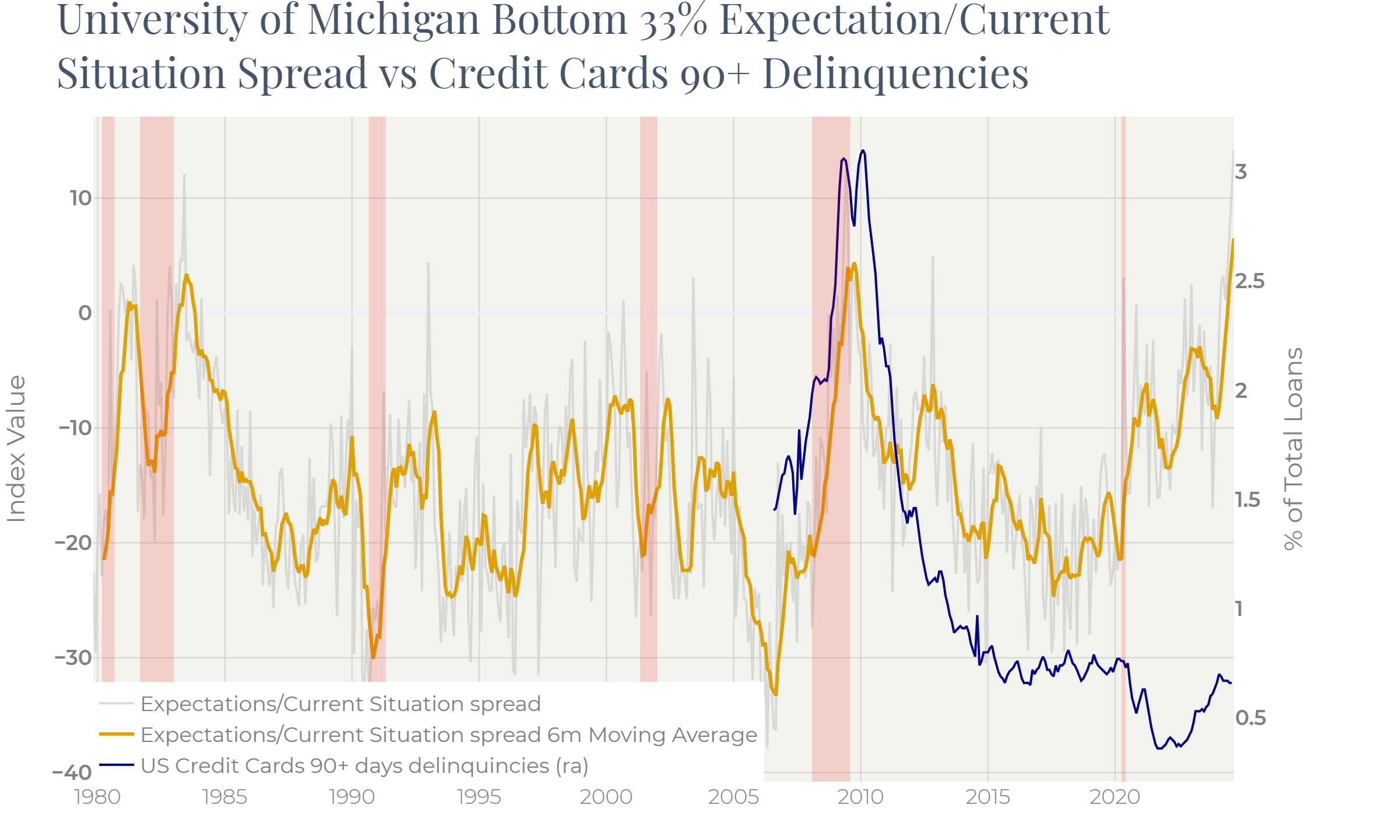Probably, the most intriguing question about the US economy is why consumer spending is so resilient despite high rates and rising unemployment. The most recent July readings show acceleration in the unemployment uptrend and, at the same time, near-record-low savings rate reflecting spending frenzy of US consumers.
One of possible answers is that the Consumer Sentiment, albeit with fluctuations, is improving. This contrasts to the disappearing savings of US households. The deeper look at the University of Michigan consumer sentiment indicators reveals interesting details.
The compounded Consumer Sentiment indicator is a derivative of two other series:
· Current Economic Conditions,
· Consumer Expectations.
Figure 1 shows that these two gauges swapped places in Q2. Current Economic Conditions seriously dropped while Expectations rose.
One can conclude that spending is supported by a positive shift in expectations. If so, another question should be answered: what is the ground for that? Is it inflation deceleration and an expected rate cut?
Figure 2 displays the spread between the two gauges (Expectation minus Current) and compares it to the credit card delinquencies:
The first thing that meets one’s eyes is that the Expectations/Current spread is at its historical top level.
But we found it more interesting that high Expectations have correlated with credit cards defaults. It drags us to another conclusion: high Expectations do not reflect high confidence based on the rational assessment of economic situation. Instead of that, it reflects hopes that the situation can improve, perhaps because it cannot get any worse.
We can detect no clear historical pattern of correlation between recessions and Consumer Expectations. As Figure 2 demonstrates, recession started on the back of falling Expectations/Current spread (1982), after this spread had dropped (1990, 2001) and on the back of rising expectations (2008).
The only conclusion we can make is that Consumer Expectations should be taken very cautiously in forecasting purposes: this measure does not necessarily witness solid consumer demand and confidence.

